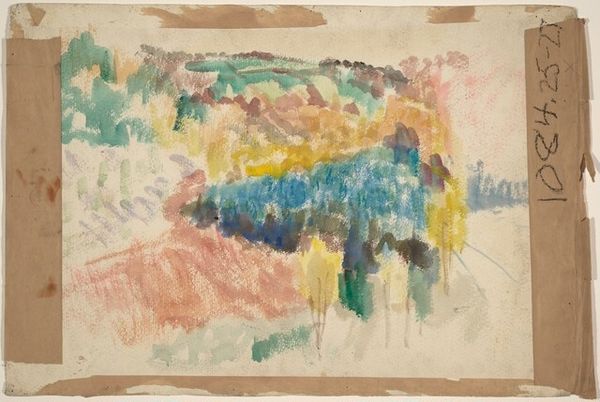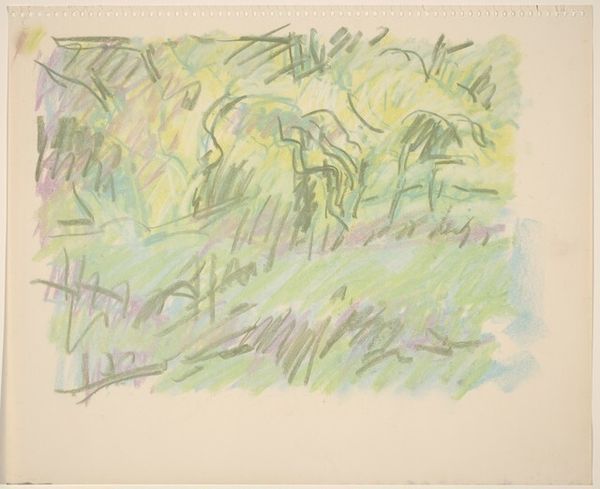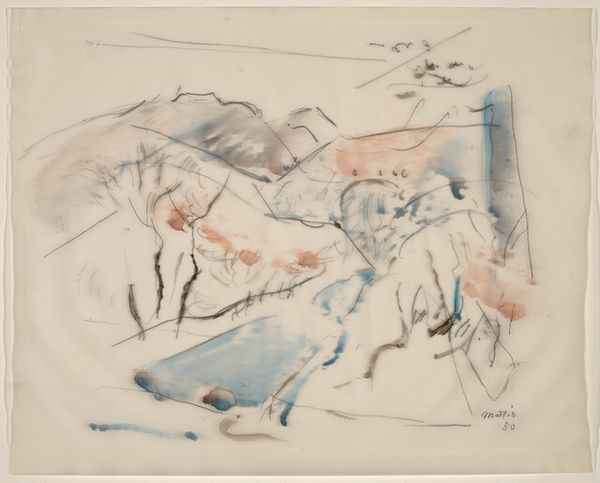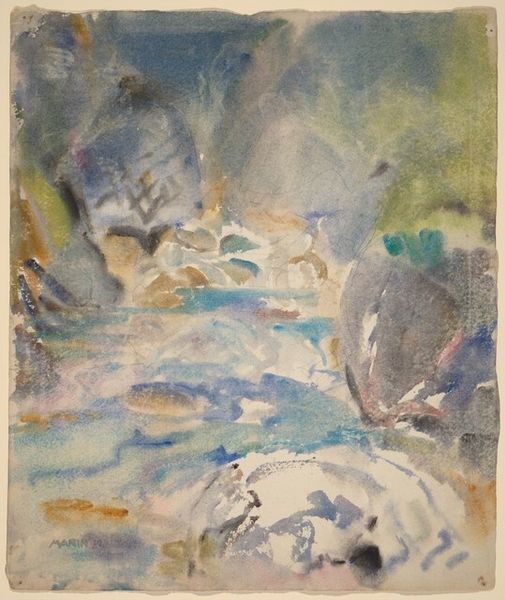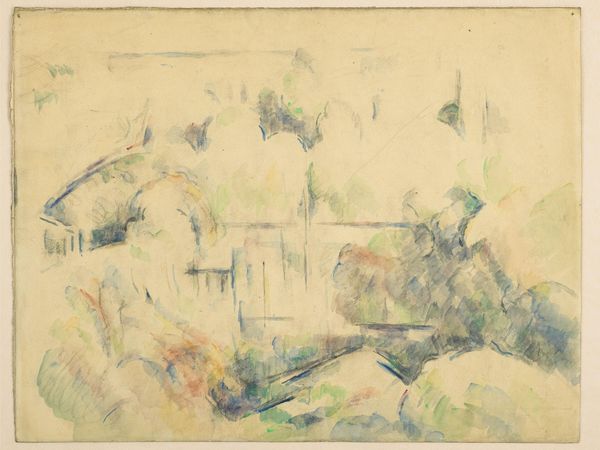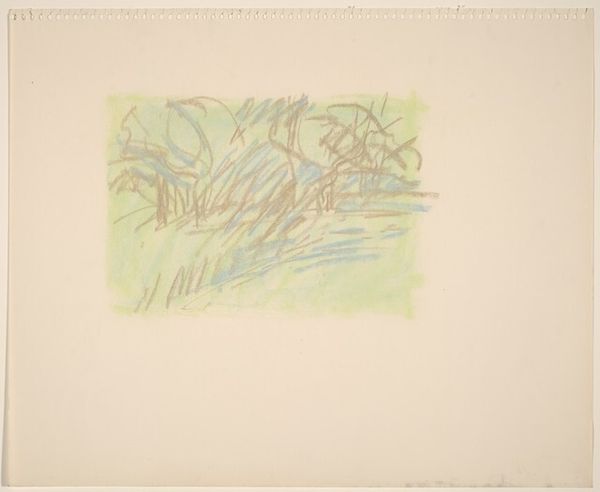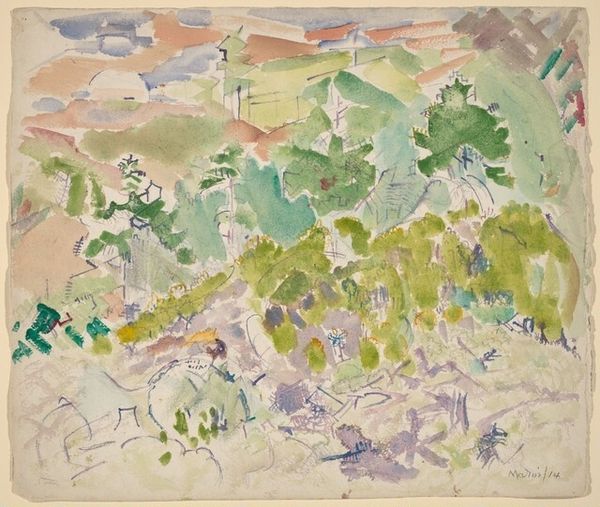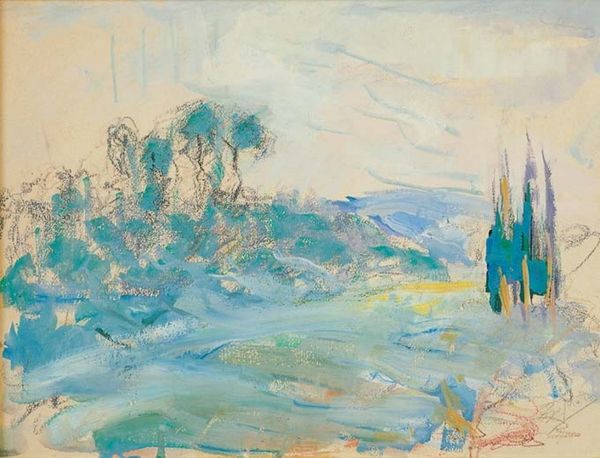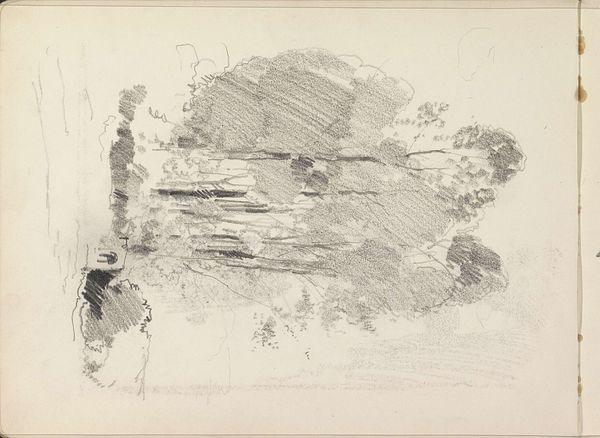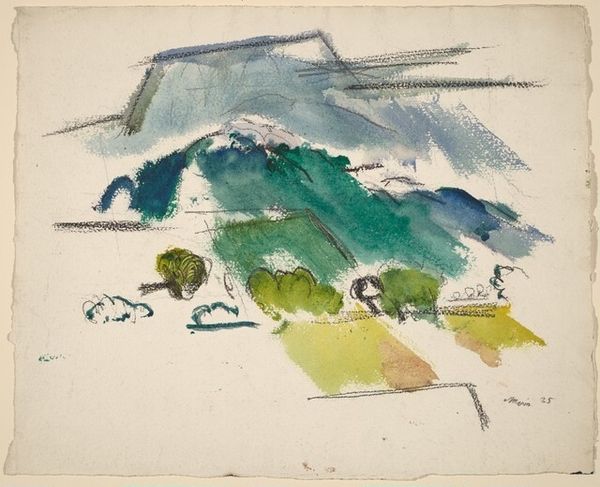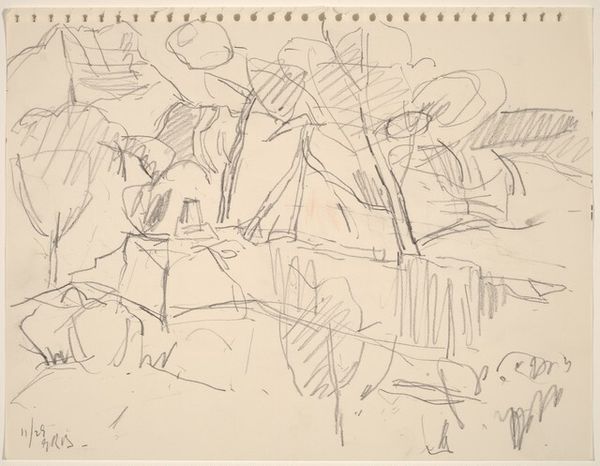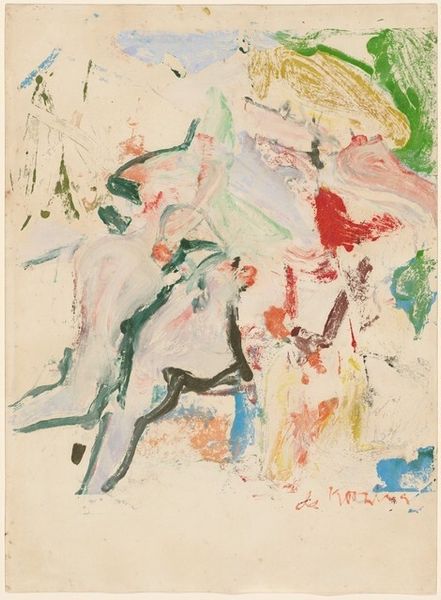
Dimensions: overall: 33.3 x 48.6 cm (13 1/8 x 19 1/8 in.)
Copyright: National Gallery of Art: CC0 1.0
Curator: Standing before us is George Bunker's "Ste. Victoire" from 1955, rendered in watercolor as a print. It’s a wonderfully evocative piece. Editor: Immediately, I'm struck by its almost dreamlike quality. It's fragmented, as if I'm remembering a landscape rather than seeing one directly. What is it about Ste. Victoire that has inspired so many artists? Curator: Ah, you’re getting at the heart of it! Ste. Victoire, the mountain in Southern France, captivated artists, most famously Cézanne, throughout art history. It became an almost archetypal form, representing something solid yet ethereal. Bunker takes that legacy and gives it his own abstract spin. Look how the washes of color define shape, light and space without reliance on distinct contours. Editor: Exactly! I see how Bunker plays with the symbolic weight of landscape. Mountains often symbolize aspiration, spiritual ascent. The colors—the blues, greens, soft yellows—evoke tranquility. However, these broken edges make it not the pure, untarnished ideal, but one remembered or perhaps imagined. The rough surface feels immediate; perhaps he captured it on site. What are these crosses on either side of the image, are those symbolic as well? Curator: As far as I know, no one has decoded these markings—I tend to believe that it had some meaning to the artist. But you know what else grabs me? It's that blend of the tangible and intangible, so typical of post-impressionism: He captures the sheer physical presence of the mountain, but through a veil of personal, almost subjective perception. There's such emotion conveyed through deceptively simple watercolor strokes. Editor: Absolutely, the symbolism resonates with broader ideas about memory, place, and the enduring power of nature. Maybe the crosses aren’t religious—simply visual markers of place. Perhaps even a game the artist is playing with themselves and the viewer. And this pushes the conversation of symbol beyond easy answers, which to me, is very intriguing. Curator: I concur. It’s that lingering sense of enigma, a kind of peaceful ambivalence that keeps drawing me back in. I am reminded once again, of nature’s uncanny ability to capture human experience. Editor: Beautifully put. It gives us pause, this artwork, invites us to reflect not just on a place, but the places we hold in our minds.
Comments
No comments
Be the first to comment and join the conversation on the ultimate creative platform.

